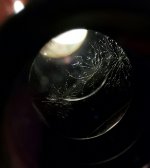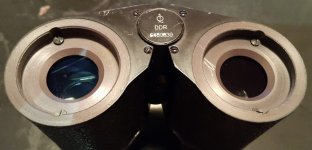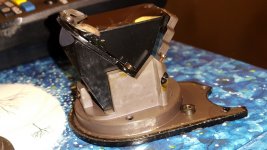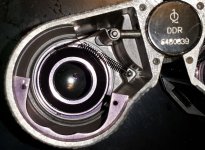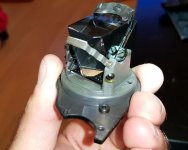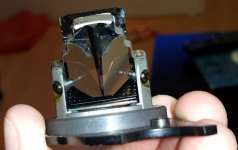Hello everyone.
I've been looking to buy small, light but optically good bino for some time now. BF has been of tremendeous help. Just today bought Zeiss Notarem 8x32 (seems to be from 1981). I really am bino rookie, as I never owned one. And now, looking through it, something just isn't OK. It gives me this funny feeling, like they are not in perfect collimation I assume, but not really sure what exactly is the case. Looking into the source of light a bit sideways reveals something on internal lenses. Is the lens damaged or is this something else (mold)? Also, when I shake them something rattles on the inside, like being loose. Can it be removed/repaired? Please check attached photo and advise.
They do smell terribly like being in some humid place for a looong time. They were actually some guys heritage and he didn't have any use for them, so he sold them quite cheap.
I've been looking to buy small, light but optically good bino for some time now. BF has been of tremendeous help. Just today bought Zeiss Notarem 8x32 (seems to be from 1981). I really am bino rookie, as I never owned one. And now, looking through it, something just isn't OK. It gives me this funny feeling, like they are not in perfect collimation I assume, but not really sure what exactly is the case. Looking into the source of light a bit sideways reveals something on internal lenses. Is the lens damaged or is this something else (mold)? Also, when I shake them something rattles on the inside, like being loose. Can it be removed/repaired? Please check attached photo and advise.
They do smell terribly like being in some humid place for a looong time. They were actually some guys heritage and he didn't have any use for them, so he sold them quite cheap.
Attachments
Last edited:




